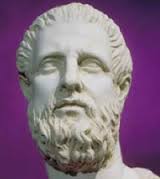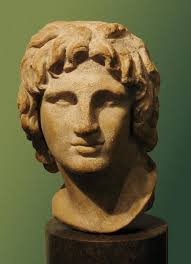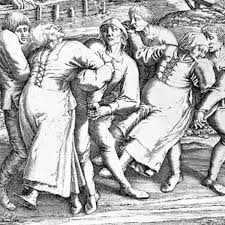Lesson 2 - Historical Perspectives of Abnormal Behaviour
| Site: | MoodleHUB.ca 🍁 |
| Course: | Abnormal Psychology 35 RVS |
| Book: | Lesson 2 - Historical Perspectives of Abnormal Behaviour |
| Printed by: | Guest user |
| Date: | Thursday, 30 October 2025, 1:14 AM |
Section/Lesson Objectives
The student will ...
• understand and describe the five major perspectives of psychologists
• differentiate between the six views of abnormality
• apply the definition of abnormal behaviour used in this course
• explain how abnormal behaviour was viewed and treated in the past [This lesson]
• state the contributions of various historical figures to our current understanding of mental illness and treatment [This lesson]
• understand the effects of stereotyping and labeling on mental health
• describe the consequences associated with a self-fulfilling prophecy
• learn about the side effects of medications as well as their effects on the brain
• differentiate between the five types of reliability and three types of validity
• understand and describe the North American classification system for mental disorders
• describe the importance of clinical interviews and testing
Introduction
In the lesson content you will come across some terms that are bolded. You may look them up in the course Glossary.
In ancient times abnormality was thought to be caused by evil spirits or poison in the body. Because the body was considered sacred, performing human autopsies was not permitted, and thus misconceptions continued. Odd behaviour was looked upon with superstition and fear -- fear born of ignorance. Literature regarding the early history of the Chinese, Egyptian, Hebrew, and Greek civilizations indicates that people during this time believed that most abnormal behaviour was caused by demons or gods. If the presenting behaviour (observable behaviour) was unusual but mystical or religious, then a good spirit or god possessed the individual. If the behaviour was unusual and disturbing or negative, then an evil spirit or demon possessed the individual.
Exorcism was used to treat much of the abnormal behaviour or possessions. Exorcisms (techniques used to remove evil spirits) included magic, praying, potions, flogging, and more. Most often this treatment was not humane. In some cases trephining was used to release the evil spirit from the body. Trephining involved chipping away a small area of the skull for the spirit to escape. While some patients survived this treatment, most did not.
Historical Perspectives
 Hippocrates
Hippocrates
The Greek physician Hippocrates (460-377 B.C.) was one of the first to reject the idea that deities and demons controlled behaviour. He believed that the brain was the main center of intellectual activity and that abnormal behaviour was due to brain pathology. Emotional factors were not considered a cause of body ailments until much later. To his credit, Hippocrates also understood that predisposition, heredity, and trauma could affect behaviour changes. From his clinical work, he made detailed observations of behaviour and classified mental disorders into three main categories: mania, melancholia, and phrentis (brain fever). His treatment of these disorders were kinder and gentler than other treatments of the day.
Melancholia, for example, required that the patient lead a tranquil life: sobriety, abstinence from all excesses, regular exercise, a vegetable diet, celibacy, and bleeding, if needed. Although his treatments were advanced for the day, the lack of physiological knowledge made some of his diagnoses incorrect. He wrongly believed that hysteria (physical illness without a biological cause) could only be contracted by women and was caused by the wandering of the uterus within the body because of its longing for children. His prescription for this malady was for affected women to marry.
Hippocrates also believed in the existence of four bodily fluids or “humours” – blood, black bile, yellow bile, and phlegm. When the fluids were improperly mixed, a physical or mental disorder was the result. While we now know no such fluids relate to our mental health, this was the beginning of understanding how balance in life is important.
|
Click on the link below to learn more... |
Watch the first half of the video below to learn more about Hippocrates. (You can stop the video when they talk about Galen.)
Historical Perspectives
Plato and Aristotle
The writings and theories of Plato and Aristotle followed those of Hippocrates. Plato (429-347 B.C.) understood that behaviours resulting from mental illness needed special consideration. He thought that if a disturbed individual committed some crime, that person should pay for the damages and receive no other punishment because of the mental illness. If the individual were severely ill or insane, the person should be removed from open view (out of the “public eye”) and cared for by relatives. In making these suggestions, Plato was addressing issues that are still controversial, namely the “insanity defence” and how properly to treat people with abnormal behaviour. When speaking of abnormal behaviour in this course, the term insanity is not used. Insanity and sanity are now considered legal terms. A person can be a little depressed or greatly depressed, but a person cannot be deemed a little bit insane.
The “not guilty by reason of insanity” defense was formally introduced in a court of law in the mid-1800’s when a deluded man tried to shoot the British Prime Minister (whom he thought was persecuting him.) The man, Daniel M’Naghten, shot the Minister’s secretary by mistake. M’Naghten was sent to a mental hospital instead of jail, which greatly dismayed the general public of that time.
|
Click below to learn more.... |
Historical Perspectives

Alexander the Great and Avicenna
Treatment of the mentally ill improved during the time of Alexander the Great (about 332 B.C.). High-quality sanatoriums were built with pleasant surroundings where people could walk, dance, row along the Nile, or listen to music. Treatment included massage, hydrotherapy, gymnastics, and dieting, although purging and bleeding still occurred. Treatment for the next few hundred years continued to be somewhat humane, but around 200 A.D., shortly before the fall of Rome, treatment declined in much of the world. Fortunately for individuals in Islamic countries, the regression was not as large. The more scientific aspects of Greek medicine survived through medieval times and are evident in the words and work of one Islamic physician, Avicenna (circa A.D. 980-1037). Following is an account of Avicenna’s humane treatment of a young prince suffering from a mental disorder:
 “A certain prince… was afflicted with melancholia, and suffered from the delusion that he was a cow… he would low like a cow, causing annoyance to everyone,…crying ‘Kill me so that a good stew may be made of my flesh,’ finally… he would eat nothing… Avicenna was persuaded to take the case…First of all he sent a message to the patient biding him good cheer because the butcher was coming to slaughter him, whereat…the sick man rejoiced. Some time afterwards Avicenna, holding a knife in his hand, entered the sickroom saying, ‘Where is this cow that I may kill it?’ The patient lowed like a cow to indicate where he was. By Avicenna’s orders he was laid on the ground bound hand and foot. Avicenna then felt him all over and said, ‘He is too lean, and not ready to be killed; he must be fattened’. Then they offered him suitable food of which he now partook eagerly, and gradually he gained strength, got rid of his delusion, and was completely cured.”
“A certain prince… was afflicted with melancholia, and suffered from the delusion that he was a cow… he would low like a cow, causing annoyance to everyone,…crying ‘Kill me so that a good stew may be made of my flesh,’ finally… he would eat nothing… Avicenna was persuaded to take the case…First of all he sent a message to the patient biding him good cheer because the butcher was coming to slaughter him, whereat…the sick man rejoiced. Some time afterwards Avicenna, holding a knife in his hand, entered the sickroom saying, ‘Where is this cow that I may kill it?’ The patient lowed like a cow to indicate where he was. By Avicenna’s orders he was laid on the ground bound hand and foot. Avicenna then felt him all over and said, ‘He is too lean, and not ready to be killed; he must be fattened’. Then they offered him suitable food of which he now partook eagerly, and gradually he gained strength, got rid of his delusion, and was completely cured.”
|
Click below to learn more.... |
Historical Perspectives
Chung Ching, Paracelsus and Johann Meyer
China also fared better than the Western countries with respect to its view of mental illness - especially during the “Dark  Ages”. Chung Ching, a medical man very much like Hippocrates, based his views of both physical and mental disorders on clinical observations and believed that stressful psychological conditions could cause organ pathology (physical illness). He, too, believed in emotional balance and the concepts of Yin and Yang. As for the Western countries, most medical men (women were not permitted to become physicians at this time) of the Middle Ages (around A.D. 500-1500) used rather inhumane treatment methods relating also to the notion that disturbed individuals were sinful and/or possessed with spirits.
Ages”. Chung Ching, a medical man very much like Hippocrates, based his views of both physical and mental disorders on clinical observations and believed that stressful psychological conditions could cause organ pathology (physical illness). He, too, believed in emotional balance and the concepts of Yin and Yang. As for the Western countries, most medical men (women were not permitted to become physicians at this time) of the Middle Ages (around A.D. 500-1500) used rather inhumane treatment methods relating also to the notion that disturbed individuals were sinful and/or possessed with spirits.
 Mass madness also was prevalent in Europe during the Middle Ages. This was a form of unusual group behaviour where people would dance and jump around in the streets. Some scholars of the time believed that people had been bitten by tarantulas. This dancing, known as tarantism or St. Vitus’s dance, was thought to be a release from the stress of the times. People felt insecure and discontented -- especially during the time of the catastrophic epidemic known as the Black Death. (During the time of the Black Death almost one third of the population of Europe perished.)
Mass madness also was prevalent in Europe during the Middle Ages. This was a form of unusual group behaviour where people would dance and jump around in the streets. Some scholars of the time believed that people had been bitten by tarantulas. This dancing, known as tarantism or St. Vitus’s dance, was thought to be a release from the stress of the times. People felt insecure and discontented -- especially during the time of the catastrophic epidemic known as the Black Death. (During the time of the Black Death almost one third of the population of Europe perished.)
Mass disorders have been documented throughout history. More recent occurrences include the 1979 example of elementary school children in Massachusetts (US) who, while at the final assembly of the year, had symptoms of dizziness, nausea, headache, and chills. Health officials found no apparent cause, but psychiatrists suggested that the stress involved with graduation and the parting of friends may have caused the mass hysteria. Another example involved West Bank Palestinian school girls who developed similar mysterious physical symptoms in spring of 1983. Originally the thought was that they had been poisoned; later thought indicated that psychological stress played an important role in the manifestation of their symptoms. 
Witch hunts were prevalent in Europe during the fifteenth and sixteenth centuries. Many people (mostly women) were accused and punished for deviating from the Christian faith, in other words, for being witches. These possessed people (witches) had obviously made deals with the devil who, in return, gave them the ability to cause sexual impotence, start floods, ruin crops, cause milk to sour, levitate, and more. Although the behaviour of some mentally ill persons was considered evil (and as such they were labelled witches and punished accordingly), it is now more widely accepted that most individuals persecuted in the witch hunts were not mentally ill but rather heretics. These people went against traditional rules and did not follow the common religious practices of the day, therefore they were targeted and punished. Only in the later part of the Middle Ages did humanistic thought begin to challenge the current beliefs regarding deviant behaviour.
An early Swiss critic of the witch hunts, Paracelsus (1490-1541), rejected the idea of supernatural possession and focused on psychic causes for abnormal behaviour. He was an early proponent of astral influence on behaviour, specifically the moon – a view that some people hold to this day. A German physician, Johann Weyer (1515-1588), also believed that supernatural forces did not play a part in abnormal behaviour. He believed that a large majority of people imprisoned, tortured, and burned for witchcraft were, in fact, sick in mind or body. His views, however, were not widely accepted at that time and were met with violent protest and denunciation.
During the sixteen century, specialized institutions called asylums were built to provide care for those suffering from mental illness. Unfortunately, these early asylums were often filthy, and the patients treated no better than animals. A famous monastery in London, St. Mary of Bethlehem, was transformed into a mental hospital in 1547. Its name was shortened to Bedlam and it became infamous for its deplorable conditions and appalling treatment of patients. At this center and others of the time, violent and bizarre patients were often exhibited to the public for a “one-penny-look.” Often the rooms (or cells) of the patient were small, filthy, and without heat and warmth. Many patients were shackled to the walls of their rooms, fed poorly, and ignored.
Historical Perspectives
Phillipe Pinel and William Tuke
Hospitals for the mentally ill in North America were not much better than those in Europe. The Public Hospital in Virginia (built in 1773) was the first in the United States dedicated solely to the treatment of mental illness. The treatment was designed to help patients “choose” to be rational. Techniques employed to achieve this end included shock treatment, drug treatment, blistering, starvation, and other torturous methods.
 By the time French physician Phillipe Pinel (1745-1826) was placed in charge of La Bicêtre, a hospital for the insane of Paris, treatment methods of the eighteenth century were in dire need of reform. Pinel asked for, and was granted, permission to try an experiment with the patients of the hospital. He wanted to treat them with kindness and concern instead of disdain and viciousness. He had chains removed, rooms cleaned, order restored, and activities planned. Kindness in place of abuse proved to be a great remedy. So great was the success of La Bicêtre that Pinel tried his method in a second hospital. Results were also rewarding in that instance! About the same time as Pinel was reforming hospitals in France, William Tuke was doing similar work in England. Tuke also believed that a caring atmosphere was superior to the then prevalent brutal and dehumanizing one. Eventually news spread to other parts of the world and into the United States. Slowly views were changing from the possession view of abnormal behaviour to the belief that the mentally ill are normal people who have lost their reasoning power as a result of psychological, physical, or social stress. Treatment, therefore, was aimed at addressing the stressors though kindness, discussion, and therapy. In North America, this movement was referred to as moral management. Moral management was very effective considering that the underlying causes of most mental illnesses were unknown.
By the time French physician Phillipe Pinel (1745-1826) was placed in charge of La Bicêtre, a hospital for the insane of Paris, treatment methods of the eighteenth century were in dire need of reform. Pinel asked for, and was granted, permission to try an experiment with the patients of the hospital. He wanted to treat them with kindness and concern instead of disdain and viciousness. He had chains removed, rooms cleaned, order restored, and activities planned. Kindness in place of abuse proved to be a great remedy. So great was the success of La Bicêtre that Pinel tried his method in a second hospital. Results were also rewarding in that instance! About the same time as Pinel was reforming hospitals in France, William Tuke was doing similar work in England. Tuke also believed that a caring atmosphere was superior to the then prevalent brutal and dehumanizing one. Eventually news spread to other parts of the world and into the United States. Slowly views were changing from the possession view of abnormal behaviour to the belief that the mentally ill are normal people who have lost their reasoning power as a result of psychological, physical, or social stress. Treatment, therefore, was aimed at addressing the stressors though kindness, discussion, and therapy. In North America, this movement was referred to as moral management. Moral management was very effective considering that the underlying causes of most mental illnesses were unknown.
Historical Perspectives
Dorothea Dix and Wilhelm Wundt
In the latter part of the nineteenth century, moral management began to experience a significant decline. Among the reasons for this decline was the rise of the mental hygiene movement that focused on the physical well-being of the individual because physicians believed that all mental disorders had biologically-based explanations. All doctors had to do was keep individuals safe and comfortable until a biological cure was found. The social and psychological environment of the patient was not even considered.
In the mid-nineteenth century, despite the advances in treatment methodology, devices such as the tranquilizing chair and the circulating swing were still used. Individuals who were more difficult to treat and manage were subjected to these devices to help route them into sound reasoning! 
Though no significant psychological help was given to patients, the mental hygiene movement did improve the conditions to which individuals were subjected. A pioneering American, Dorothea Dix (1802-1887), was instrumental in changing the conditions prevalent in US asylums. She spoke about the inhumane treatment that the mentally ill faced, and she lobbied the government. Dix was able to raise enough money to build hospitals in the US as well as open institutions in Canada and Scotland. Her efforts resulted in the establishment of over thirty mental hospitals!
About the same time the mental hygiene movement was advancing, progress in the study of anatomy and biology was instrumental in understanding many abnormal mental conditions. One major event was the discovery of the organic factors associated with general paresis – one of the most serious mental illnesses of the nineteenth and early twentieth centuries. Symptoms of general paresis include paralysis and dementia. Individuals suffering from this condition had, on average, two to five years before death. Doctors determined that syphilis of the brain caused general paresis.
Treatment consisted of infecting the patient with malarial fever. This was an important example of how medical science helped cure a mental disorder. This discovery was a huge change from the earlier belief that the cause was supernatural to scientific proof of how pathology can cause a mental disorder. Thankfully, medical research continued, and we now use penicillin to treat general paresis!
 While biological causes for abnormal behaviour were being heavily researched, Wilhelm Wundt (1832-1920) began to investigate psychological causes. He established the first experimental psychology laboratory, and his methods set the standard for future studies. The research completed in his laboratory was instrumental in moving psychology from the realm of philosophy to the realm of science. Now began the notion that behaviour could have environmental, sociocultural, and psychological causes in addition to biological causes.
While biological causes for abnormal behaviour were being heavily researched, Wilhelm Wundt (1832-1920) began to investigate psychological causes. He established the first experimental psychology laboratory, and his methods set the standard for future studies. The research completed in his laboratory was instrumental in moving psychology from the realm of philosophy to the realm of science. Now began the notion that behaviour could have environmental, sociocultural, and psychological causes in addition to biological causes.
Lesson Review
Perhaps this lesson has not been too much of a challenge with an overload of abstract ideas. Historical data is not an easy topic.
|
To summarize: • In ancient times abnormality was thought to be caused by evil spirits or poison in the body. • While biological causes for abnormal behaviour were being heavily researched, Wilhelm Wundt (1832-1920) began to investigate psychological causes. He established the first experimental psychology laboratory, and his methods set the standard for future studies. |
Assignment
Complete S1L1L2Quiz (Note: you may refer back to the lesson as much as you would like while you complete this quiz).